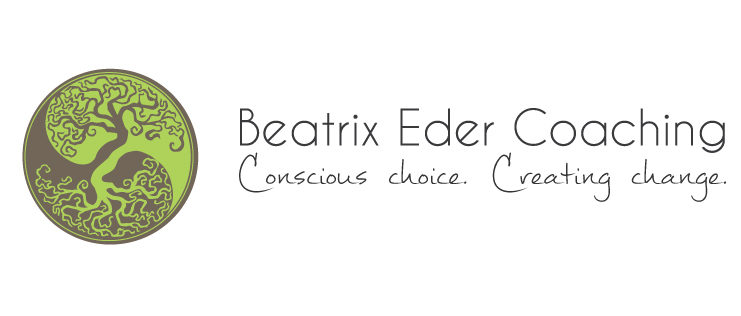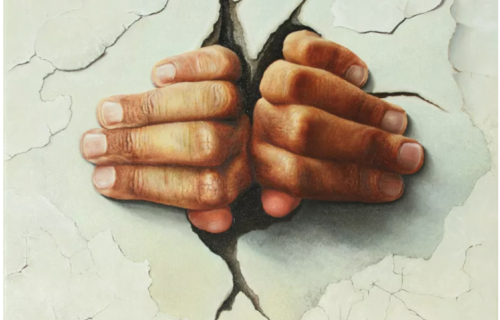
The impact of perspective
Competitive and Collaborative worldviews
Our worldviews are the subconscious structures to our thoughts and actions: though we might not notice, they influence how we see and make sense of our existence, how we interact with others and what decisions we make. There are six dimensions of our worldview that bridge our perspectives and actions:
1) Reality: individual reality and how we experience life
2) History: what elements have shaped our current reality
3) Future: where do we go
4) Values: beliefs about what is right and wrong and how things are “supposed to be”
5) Practices: what actions do we choose to orient our life
6) Knowledge: where our knowledge comes from, how we inform and educate ourself
Independence & Power-over
Though there are plenty of differences between countries and cultures, the most prevalent worldview in the modern world -in particular in business, economy and politics- is based on theories of competition, survival of the fittest, battle for power and war against an enemy (enemy being anything that one group of people dislike and fear: can be COVID-19, terrorism, poverty, cancer etc).
The foundation to these ideas has been developed over 160 years ago (~1860) by Charles Darwin. These theories have been the cradle of the widely spread understanding of an independent, competitive, dominant and exploitative power. It is this "power-over" attitude which is based on two fundamental beliefs of domination systems:
1) The assumption of the scarcity of resources and means
2) The assumption that living beings, and humans in particular, are motivated by the desire to satisfy their impulses and this without consideration of the consequences - be it for self or others
In this worldview we find safety in separating from others and opposing them; this understanding of power dehumanizes interactions and decisions. In this worldview there is a constant underlying fear of not having enough and that we might be deprived of the little we have.
On an individual level, this worldview justifies that we fight to get our needs met and on a societal level it accepts that meeting our needs will be often achieved through mechanisms that distribute resources unequally and at the detriment of others.
In these domination systems, we play one of two roles:
a) Being the dominator who can meet their need at the expense of others’ needs OR
b) Being the subordinate who has no power to meet their needs except through the grace of the dominator
Independently of our culture and the style of our family of origin, most of us have grown up with this experience of domination and subordination. With this, we are programmed to control or obey and it is uncanny how easily we switch and adapt to both roles.
Interdependence & Collaboration
A more recent -and rather holistic- theory of evolution is the combined work of Ivan Wallin and Lynn Margulis. Their research demonstrated that it’s not competition but rather collaboration and interdependence that contribute to evolution: Life evolves through first diversifying and then integrating diversity through collaboration. This way of collaborating is not straight forward and emerges often from the paradox of antagonistic processes.
If you are interested in reading two examples of interdependent and collaborative relationships (also called symbiosis) in the world of plants and animals, do read the next two paragraphs. If not, just scroll down and continue reading at the section “From the individual to the collective”.
Symbiotic relationships
The word “symbiosis” is derived from the Greek and means ‘living together’. Applying it in its strictest sense, ecologists use the word to refer to a range of different interactions.
- Parasitism is where organisms feed on another, harming, but not necessarily killing the host.
- Commensalism is when an organism lives on a host, “hitching a ride”, but not really causing any harm.
- Mutualism refers to those interactions in which both organisms benefit.
In more popular usage, symbiosis usually refers to mutualistic relationships.
Example 1: Lichens
Lichens are those small, colorful leaf-like structures that can often be seen on the bark of trees (refer to the image of this article showing some lichen). There are about 17,000 species of lichens in the world and they appear in almost all climate zones. These intriguing organisms are not plants and are actually made up of a fungus and an alga. The fungal partner forms the solid structure of the lichen, while the alga provides the energy through photosynthesis – the process of converting the sun’s energy into sugars. This is a very close alliance called endosymbiosis – a term used to describe a symbiotic relationship in which one organism lives within the cells or body of another. Lichens can also form a substrate on which other plants can grow, and they are often habitat for tiny mites, spiders and other invertebrates.
Example 2: Wolves and ravens
Ravens will often associate with wolf packs, as the wolves not only make food (such as deer carcasses) available, but also open up tough hides that the birds would not be able to penetrate very easily by themselves. Ravens have been observed to reveal the location of prey by calling, thereby making hunting easier for the wolves, and improving the chances of a meal for themselves.
From the individual to the collective
In this interdependent worldview the focus shifts from individuals to the collective and the key strategy of Life is to optimize the system as a whole, rather than maximizing only some parameters of the system for a few and at the detriment of many.
The biologist, Peter Corning, former president of the International Society for Systems Science and director of the Institute for the Study of Complex Systems, says:
If a society is viewed merely as an aggregate of individuals who have no common interests, and no stake in the social order, then why should they care? But if society is viewed […] as an interdependent collective survival enterprise, then each of us has a vital, life-and-death stake in its viability and effective functioning, whether we recognize it or not.
Inclusive Leadership: Sustainability through collaboration
Inclusive leadership is among the main drivers of holistic sustainability, considering an organization’s long-term impact on society and the environment. Inclusive leaders are able to maintain financial performance and balance the pressure of short-term priorities with long-term goals while making choices that take into account the triple bottom line of people, planet and profit.
Almost all companies know that collaboration is essential to the growth of their people and the business. When collaboration is embedded in the way of doing business, it allows to
- leverage the diversity of people and tap into the full potential of their skills and experiences
- create a sense of belonging and community where everyone is fully engaged
- shape the organizational culture and be attractive to current and future employees.
Collaborating vs Negotiating
Many companies express their aspiration to a collaborative way of working with employees, customers, suppliers and shareholders. Yet all too often, we have the impression of collaborating and do not recognize when our scarcity-competition-domination mindset kicks in. In these instances, we are not collaborating anymore, but merely negotiating how our own needs can be met.
Have you ever entered a discussion with an idea of the exact outcome? Have you ever been listening with a defensive attitude, feeling irritated and personally attacked by the perspective of the other(s)? Have you ever noticed that you are thinking about your own response while the other person did not finish talking yet?
These are common reactions when we are in the scarcity-competition-domination mindset. They frequently show up when
- there is time pressure to act quickly instead of dialoguing
- hearing viewpoints totally different from yours
- disliking or having difficulty to follow the style of another person
- trying to listen to people whom you consider less experienced / less skilled / less respectable in the area of discussion
- working with people with whom you had a difficult relationship in the past
- there is misalignment around the objectives of the collaboration
So, despite the fact that evolutionary we are designed for collaboration and that we have clarity about its benefits, what is it that makes it so hard to consciously choose collaborating with others? Are we prisoners of an ingrained worldview and inherited cultural messages that does not serve us?
How can we grow both the trust and the skills to live, work and lead in a collaborative way in a world that is built on competition and control?
In a separate article, I will explore some practices that can help us to remember our commitment to genuine collaboration and change our behavior in ways that are conducive of working together with people and perspectives different from ours.
Stay tuned!
Questions for reflection
- How might the outcome of a conversation change when we enter with a perspective of competition / domination? What if we maintain a perspective of connectedness / collaboration?
- What are your personal challenges to stay in a collaborative attitude?
- What triggers these behaviors in you that hinder collaboration?
********************************************
Was this article helpful?
Here are some ways I can support you and your organization:
Get Individual leadership coaching with Beatrix
Deepen and accelerate your learning with one-on-one coaching with Beatrix. Identify and transform patterns and learn new tools that will help you to practice Inclusive Leadership at Work & Home and effectively work with people across differences in identity, experience and power.
Inquire about Individual Coaching here.
Get group coaching with Beatrix
Team coaching is a mid-term process with regular sessions that support a team in an individualized way to improve both the improvement of task-execution as well as the collaborative alliance within the team. The process supports teams to become more cohesive, increase their ability to problem-solve and become more competent in transforming overt and covert conflicts.
Inquire about Group Coaching here.
Book Beatrix for a webinar / workshop / training
Beatrix facilitates virtual and in-person workshops using experiential, interpersonal and reflective activities to share knowledge around Inclusive Leadership, inspire vision, ignite change and build workplaces that are diverse and cohesive. Participants will be supported to embrace new perspectives about differences and translate freshly gained knowledge into concrete actions.
Sessions are customized to your needs and can be delivered in 90-minutes to 3 hours.
Inquire about Webinars and Workshops here.
Get support with Organizational Consulting
Beatrix can help your company to co-create creative and cohesive teams that work effectively in a hybrid work environment, using effective feedback systems, collaborative decision-making processes and respectful communication norms.
Inquire about Organizational Consulting here.



